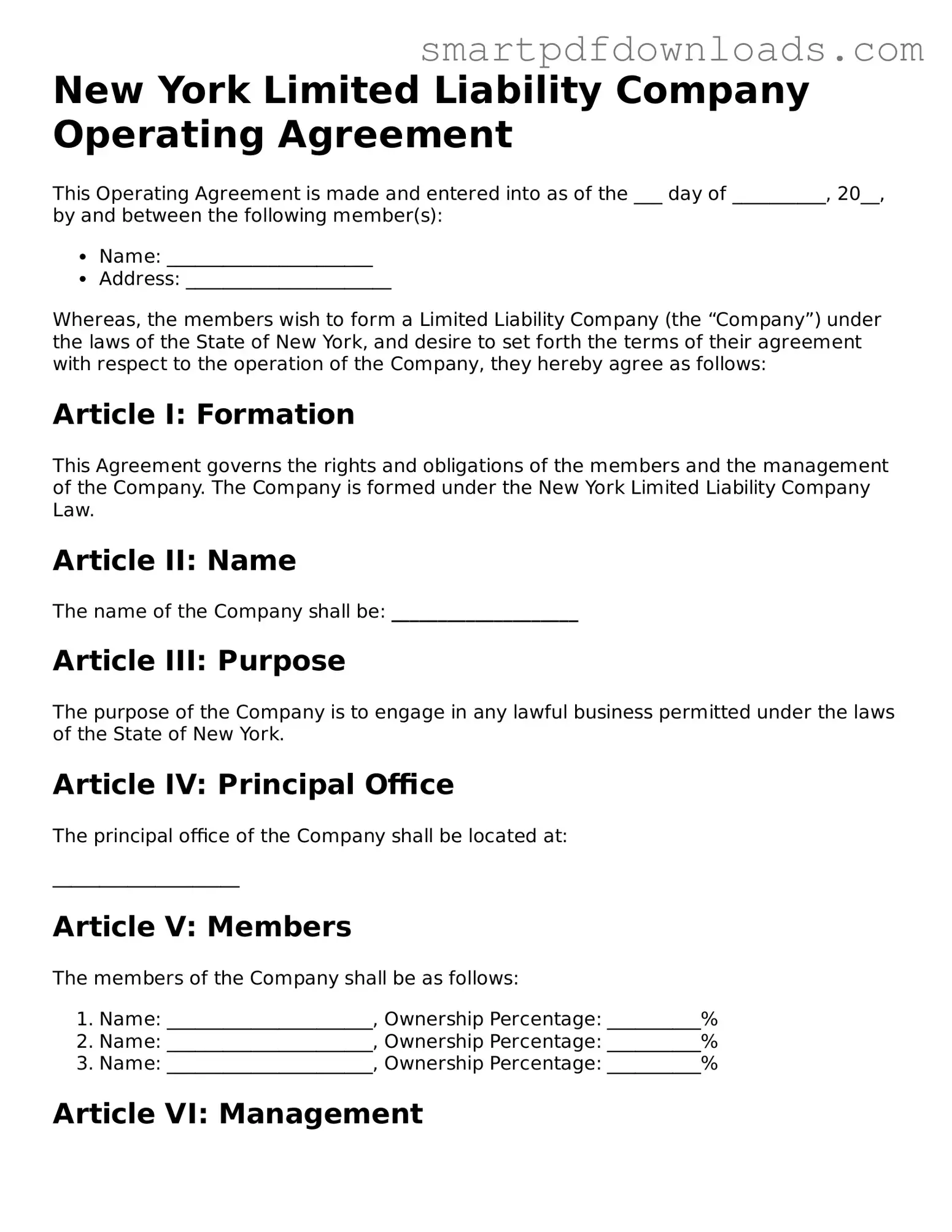New York Limited Liability Company Operating Agreement
This Operating Agreement is made and entered into as of the ___ day of __________, 20__, by and between the following member(s):
- Name: ______________________
- Address: ______________________
Whereas, the members wish to form a Limited Liability Company (the “Company”) under the laws of the State of New York, and desire to set forth the terms of their agreement with respect to the operation of the Company, they hereby agree as follows:
Article I: Formation
This Agreement governs the rights and obligations of the members and the management of the Company. The Company is formed under the New York Limited Liability Company Law.
Article II: Name
The name of the Company shall be: ____________________
Article III: Purpose
The purpose of the Company is to engage in any lawful business permitted under the laws of the State of New York.
Article IV: Principal Office
The principal office of the Company shall be located at:
____________________
Article V: Members
The members of the Company shall be as follows:
- Name: ______________________, Ownership Percentage: __________%
- Name: ______________________, Ownership Percentage: __________%
- Name: ______________________, Ownership Percentage: __________%
Article VI: Management
The management of the Company shall be vested in the members. Decisions shall be made by a simple majority of the ownership interests unless otherwise provided herein.
Article VII: Fiscal Matters
The fiscal year of the Company shall end on the 31st day of December of each year. The accounting method to be used shall be cash or accrual based on what the members decide unanimously.
Article VIII: Indemnification
To the fullest extent permitted by law, the Company shall indemnify any member or manager against expenses and liabilities incurred in connection with the Company.
Article IX: Amendments
This Agreement may only be amended by a written agreement signed by all members.
Article X: Governing Law
This Agreement shall be governed by and construed in accordance with the laws of the State of New York.
In witness whereof, the members have executed this Agreement as of the day and year first above written.
Member Signatures:
- ____________________ (Member Name)
- ____________________ (Member Name)
- ____________________ (Member Name)
____________________ (Date)
